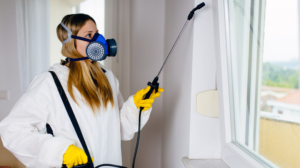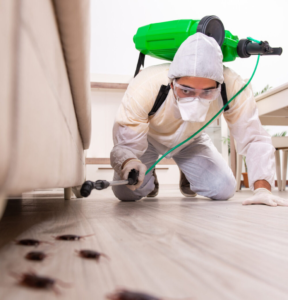Masonry reached a new level of precision and sophistication in Ancient Egypt with the construction of their famous pyramids. This era also saw the invention of tools and techniques that greatly improved the quality and effectiveness of brick production.
Masonry’s modern adaptation for structural requirements, minimal maintenance, and aesthetics make it a desirable choice of building material. Contact Masonry Charleston SC now!

Brick is one of the most common materials used in masonry. It is known for its durability and strength, as well as its ability to withstand weathering and fire damage. Brick masonry also offers cost-effectiveness, energy efficiency, and sustainable characteristics.
Brick masonry is commonly used to build walls, foundations, and fireplaces. It can be found in historical buildings, modern apartment buildings, and commercial and industrial structures. Brick can also be used to create garden walls and fencing, as well as to construct driveways and sidewalks.
Masonry can be made with different kinds of clay bricks, each with their own distinct properties. These include color, texture, and density. Some types of brick are softer than others, while some are more durable. Other factors that influence the quality of bricks are their firing temperature, density, and shape.
Traditionally, masons molded bricks by hand. Today, molding is typically done by machine using steel molds. The resulting bricks are either dry pressed or chemically set. The former is less expensive than the latter. Chemically set bricks, or fly ash bricks, are made of a mix of clay, fly ash, and lime, and are often used as a cost-effective alternative to traditional clay bricks for load-bearing walls.
Bricks are categorized by their quality, with first-class bricks having the highest durability and strength. Second-class bricks are made with ground-molding and have a rough surface. Third-class bricks are better than second-class, but still have a rough surface and lower durability. Some bricks are made with perforations or wire-cut faces. These are called extruded bricks, and they are made by forcing clay through a die that has holes or wires cut into it. This process reduces the amount of clay needed for each brick and makes them lighter and easier to handle.
Stone
Masonry is one of the oldest building construction methods. Its durability, strength, and resistance to pests and weathering make it ideal for structures that must withstand constant exposure to the elements. Whether used as load-bearing walls or decorative veneer, stone masonry adds value and beauty to buildings.
The cost of a masonry project depends on several factors, including the type of stones used, the design’s complexity, and the project size. Stones like granite and marble are pricier than options like concrete block and brick, while detailed designs increase labor and materials costs. Large projects require more time to build, so they typically cost more than smaller ones.
Brick and concrete block masonry are economical and versatile building materials, suitable for both load-bearing walls and cladding. Concrete blocks are typically larger than brick, reducing the number needed to build a wall of a given size and making them faster to lay. They are often used to construct foundations, commercial and residential buildings, and retaining walls.
These types of masonry are more utilitarian than other varieties, but modern designers have embraced their raw, industrial aesthetic in designs from Oscar Niemeyer’s Palace of Dawn in Brasilia to Le Corbusier’s Unite d’Habitat in Marseille. Concrete block masonry has also gained popularity for its seismic resilience and ability to resist tensile stresses that can lead to cracking or failure in other materials.
Another method of masonry is rock-faced work, which uses rough or uncut stones that are stacked as they come from the quarry and then finished with a pitching chisel, leaving the joints pitched off to a line. This technique is inexpensive and quick to implement, but it may not be as attractive as other methods.
Concrete
Concrete is one of the most durable construction materials available. It can be used as the foundation for a building, or as a strong backing for many types of veneer systems. It is also a cost-effective choice for wall bearing applications, and offers the benefit of resiliency to increase fire safety and energy efficiency. Concrete masonry is a preferred material for both residential and commercial construction, and it’s also available in a variety of colors and finishes to complement any architectural vision.
When it comes to concrete masonry, there are several types of blocks available. These include standard units, which are commonly used in a range of construction projects, as well as specialized blocks that have been designed to serve specific construction needs. For example, there are lightweight CMUs that reduce the overall load on the structural system, as well as acoustic blocks that help to diminish unwanted noise.
Concrete masonry is non-combustible, which improves the safety of the occupants of a building and protects them from potential fire damage. It is also highly durable and requires minimal upkeep, which makes it a cost-effective option over time. In addition, concrete masonry structures provide superior insulation, which contributes to energy efficiency and aligns with sustainable construction practices.
Concrete and masonry are two of the most essential elements in any construction project. Understanding the differences between these two key components is crucial to ensuring that your building is as functional as it is beautiful. This resource dives deep into the distinction between these essential elements and sheds light on how commercial concrete contractors and masonry contractors can use their expertise to make your building projects a success.
Retaining Walls
You’ve seen huge block walls at commercial buildings or your neighbor’s garden, but these structures aren’t just for show. They’re holding back soil to prevent erosion and create terraces on sloped land. A skilled masonry contractor can design and construct walls to meet the specific needs of your landscape.
While retaining walls can be constructed with a wide variety of materials, concrete and brick are commonly used. For concrete walls, they are often designed with rebar reinforced concrete (a wire mesh embedded within the concrete) to improve strength and durability. A well-designed wall can last for decades or more. However, the longevity of a retaining wall depends on factors that aren’t immediately apparent, such as a sound footing buried in the ground and proper drainage.
Retaining walls can be designed with different heights and bases to accommodate specific loads. The design process involves calculating the soil bearing pressure, assessing safety against overturning and sliding, and evaluating flexural and shear stresses. It’s important to have a professional engineer assist with this process.
A retaining wall that isn’t properly designed and constructed can fail, resulting in costly damage or even land movement. Inadequate drainage is a major cause of failure, leading to water buildup and hydrostatic pressure behind the wall. Proper grading and the use of perforated drainage pipes can help prevent this problem. Additionally, weep holes should be incorporated into the wall to allow water to escape.
Other factors that contribute to the success of a retaining wall include a properly compacted base, a gravel backfill, and the use of geogrid reinforcement. It’s also essential to monitor the wall for signs of failure and make repairs promptly. Regular expert inspections can ensure that your retaining wall remains in good condition for years to come.
Curb Appeal
Masonry work has the power to transform your home’s exterior, offering both beauty and practicality. Whether it’s brick repointing, stone veneer installation, chimney repairs or custom stone patio construction, high-quality masonry projects can make your house stand out in the neighborhood and enhance the value of your property. Using custom designs, unique patterns and materials, masonry projects can be created for eye-catching walkways, driveways, and entryways that will leave a lasting impression on guests and passersby.
Curb appeal is more than just a visual impression on visitors or potential homebuyers; it’s the first impression your house makes and can influence how people perceive your property overall. Adding stone features, such as a paved walkway or a stone entranceway can give your home a polished, well-maintained appearance that leaves a positive impression on anyone who sees it.
Another way to boost your curb appeal is to add a stone accent wall in your yard, which can serve as a beautiful focal point or accentuate the natural elements in your landscaping design. Masonry walls can also be employed to frame garden beds, provide a dividing border between different areas of your yard, or to reduce erosion.
Unlike other outdoor structures, masonry materials like stone and brick are long-lasting and require little maintenance. Moreover, they are better equipped to resist damage from harsh weather, pests, and other environmental hazards. Therefore, masonry works are a great option for homeowners who want to enhance the exterior of their house without worrying about frequent upkeep and repairs.
Whether you’re looking to upgrade your front walkway, build a new backyard patio or renovate your retaining wall, we offer a variety of masonry construction services and can accommodate any project size and scope. Contact us today to learn more about how our masonry services can elevate your property.








